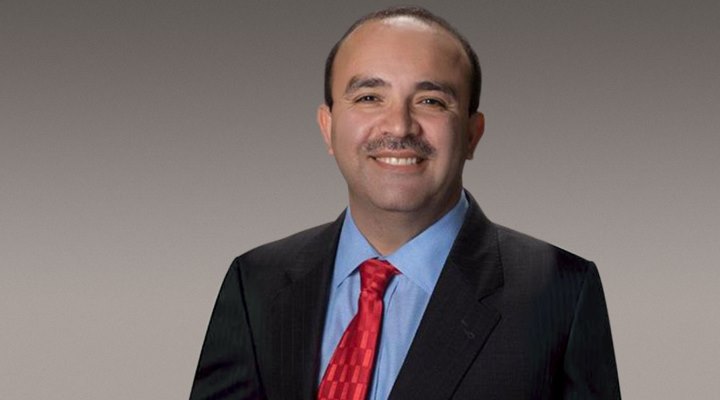Dr. Alireza Minagar was born and raised in Iran where he attended and graduated from Tehran University Medical School in 1991. In 1995, he immigrated to the U.S. and went to New York Medical College and Mount Vernon Hospital to complete a one-year internship. Dr. Minagar then pursued his residency in neurology first at NYU and then the University of Miami, where he also completed a two-year fellowship in multiple sclerosis and clinical neuroimmunology.
In 2001, Dr. Minagar joined the faculty members at the LSU Health Sciences Centre in Shreveport, Louisiana where he is currently a professor of neurology.
In addition to his passion for teaching, Dr. Minagar’s other passion is publishing. He is an author and editor of numerous scientific articles and textbooks. He also enjoys painting portraits in his free time. Dr. and Ms. Minagar are proud parents of two sons.
Why did you choose to become a doctor?
I became a doctor because I wanted to help individuals with progressive illnesses and make the world for them a better place to live. My first passion is humanity and to help those people who need help because, in my opinion, practicing medicine is a sacred job. I decided at a very young age to devote my life to help people.
The second reason is that I became interested in medicine as a science, to find out the mechanisms of disease formation, how illnesses appear in people, and what we can do from a scientific viewpoint to treat or even eradicate these illnesses.
What area do you specialize in?
My main area of interest and specialty is the human nervous system, both central and peripheral. To be more specific, by training I am a neuroimmunologist. However, over the course of years, I’ve expanded my interest and activities to areas such as vascular neurology, neuroimaging, and behavioral neurology. I have spent a significant portion of my career on neuroinflammation and lymph nodes.
What inspired you to specialize in this field?
What inspired me was when I started working in the lab with another scientist who was a neuroimmunologist. He was interested in neuroinflammation and we worked with both animal models and cell models of inflammation in the nervous system. And gradually I developed more interest in the blood-brain barrier and how substances get through that barrier into the human brain. That interest led me to study multiple sclerosis as a prototype of a neuroinflammatory condition.
What is the most challenging aspect of being a neurologist?
The most challenging aspect is to deal with the most complicated and the most unknown part of the human body — the human brain. We know more about the moon and other stars, and about our oceans, than we know about the brain and how it functions and malfunctions. So to figure out why a person loses his or her memory, or why they developed weakness or paralysis, it’s a daunting task. You need to have a solid basis of knowledge on neuroanatomy, neurophysiology, and neuropathology to understand the mechanisms of defense in neurologic illnesses.
What do you love about your job?
What I love most about my job is when I can help a patient and that patient comes back with a smile to tell me that he or she has found some relief in their life with my treatment. That smile is the utmost reward for me.
What would you consider the greatest accomplishment in your career?
My greatest accomplishment beside the books, the textbooks, and the articles that I have published, is the large number of residents and fellows that I have trained and graduated in the field of neurology and multiple sclerosis.
Tell us about an interesting project you are working on right now.
I am currently working on another book on mechanisms of neuroinflammation and neurodegeneration in the human brain. Certain diseases, for example, such as multiple sclerosis and Alzheimer’s disease, these both have inflammatory aspects and neurodegenerative aspects. The book is about learning how the inflammation causes these diseases to develop and how that process eventually leads to the loss of neurons and axons, which is neurodegeneration.
Where do you see yourself in 5 years?
In five years, I see myself to be the editor of more textbooks, publishing more articles and doing more research on the basic science of neurological illnesses, along with graduating more residents who turn out to be successful neurologists. I would also like to reinvent myself as a teacher and spend more time teaching medical students. My passion is teaching.
If you could discover a cure for anything, what would you choose?
I would discover a cure for multiple sclerosis because I see how these patients suffer daily and I would find a cure for them to put an end to that painful situation.

